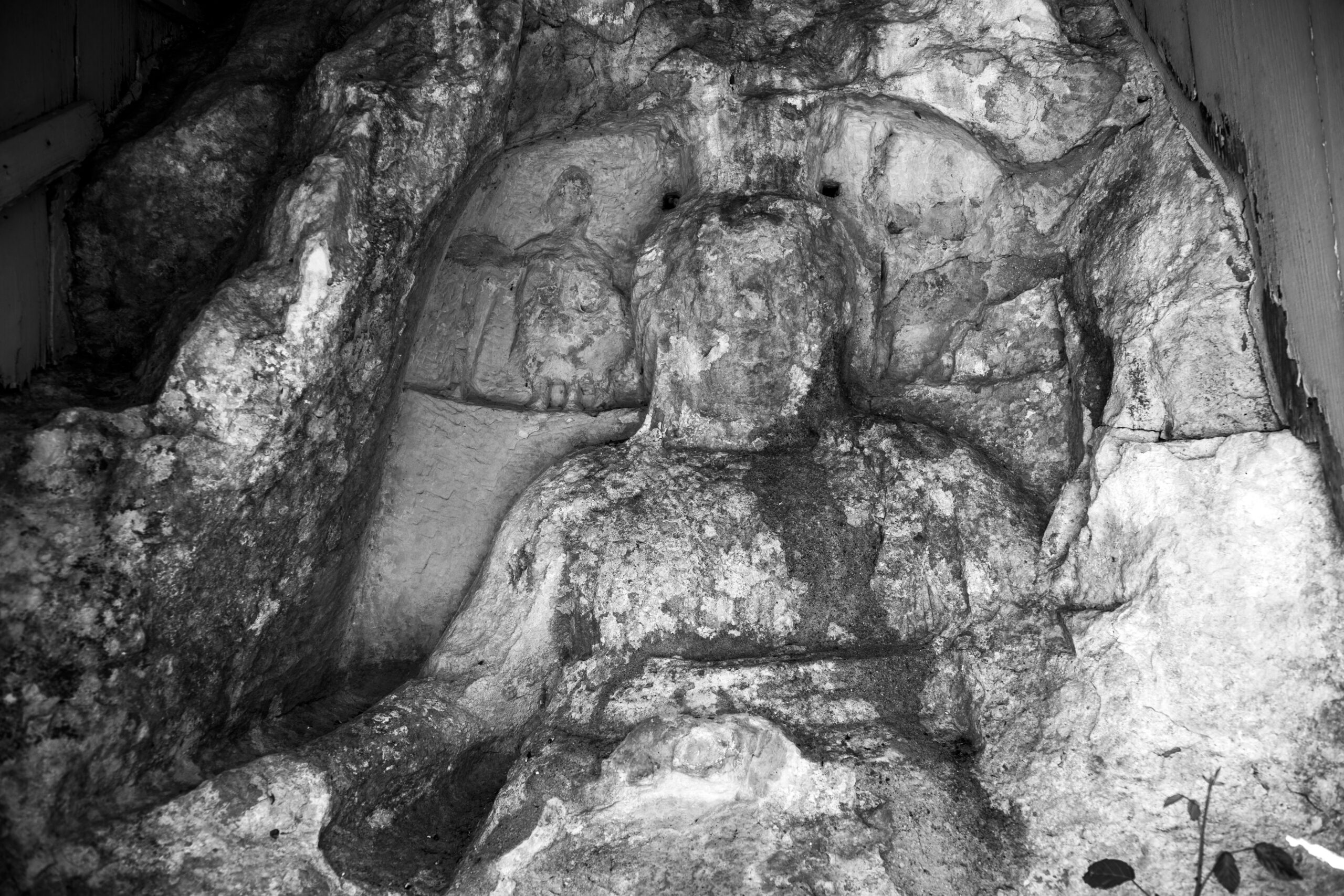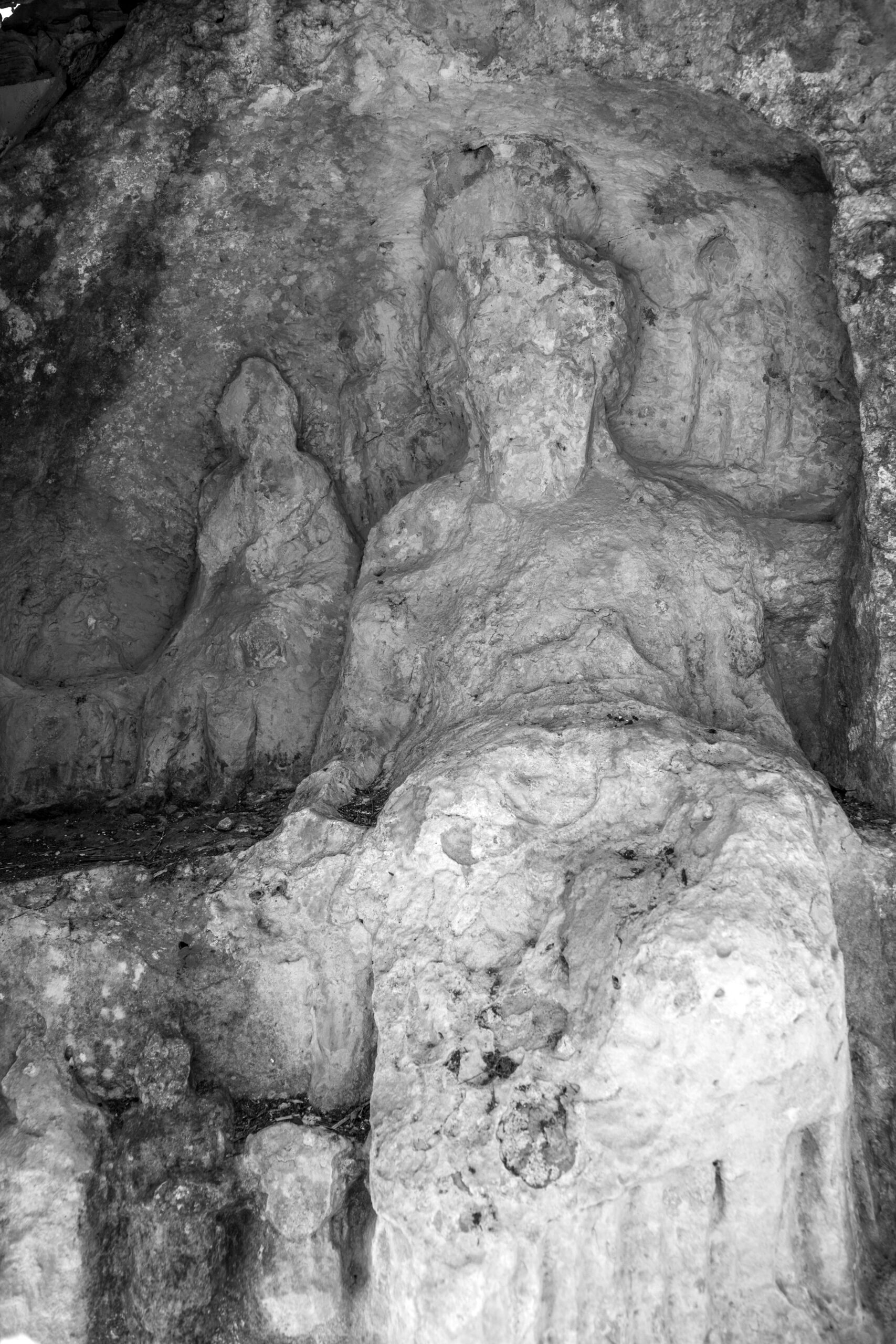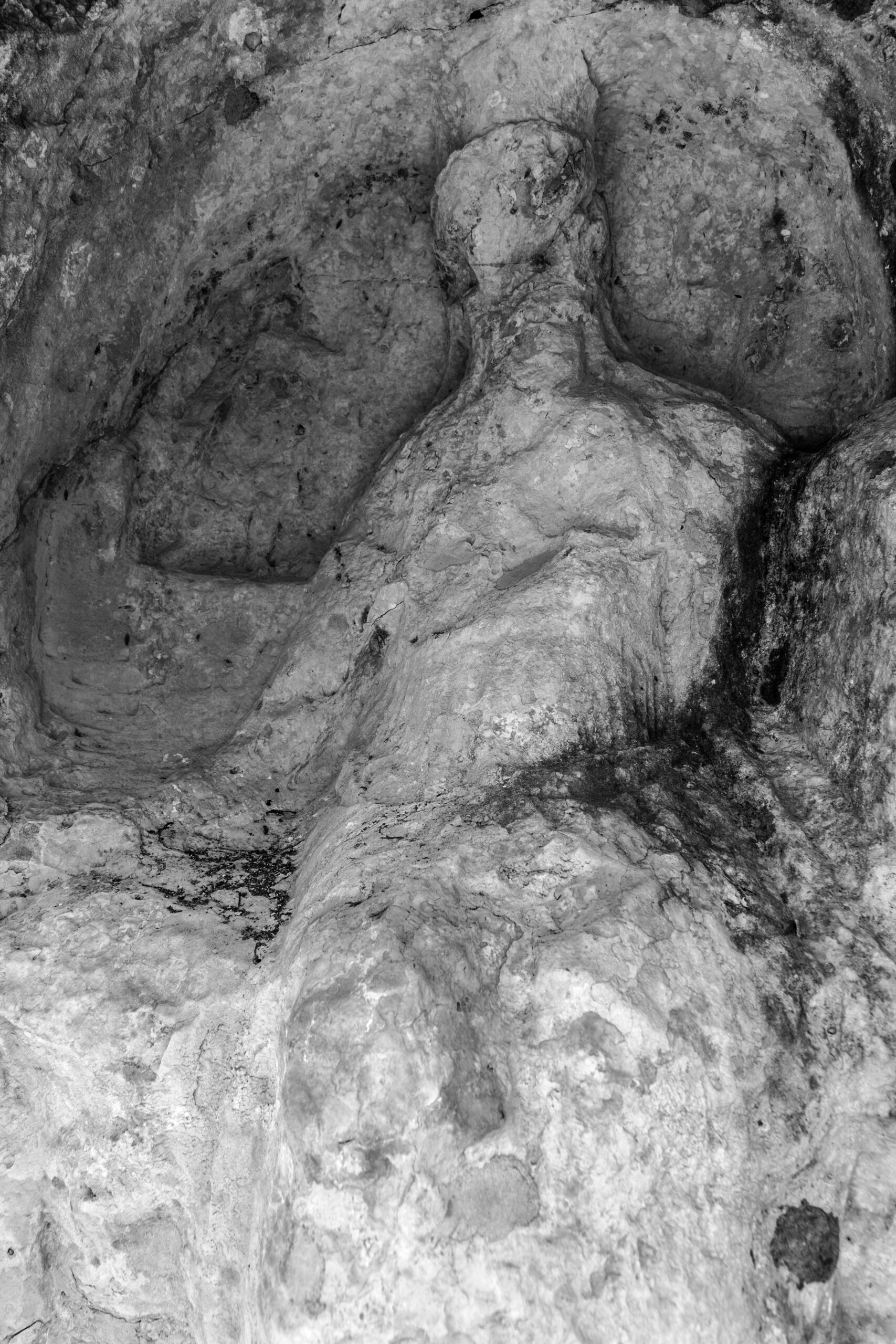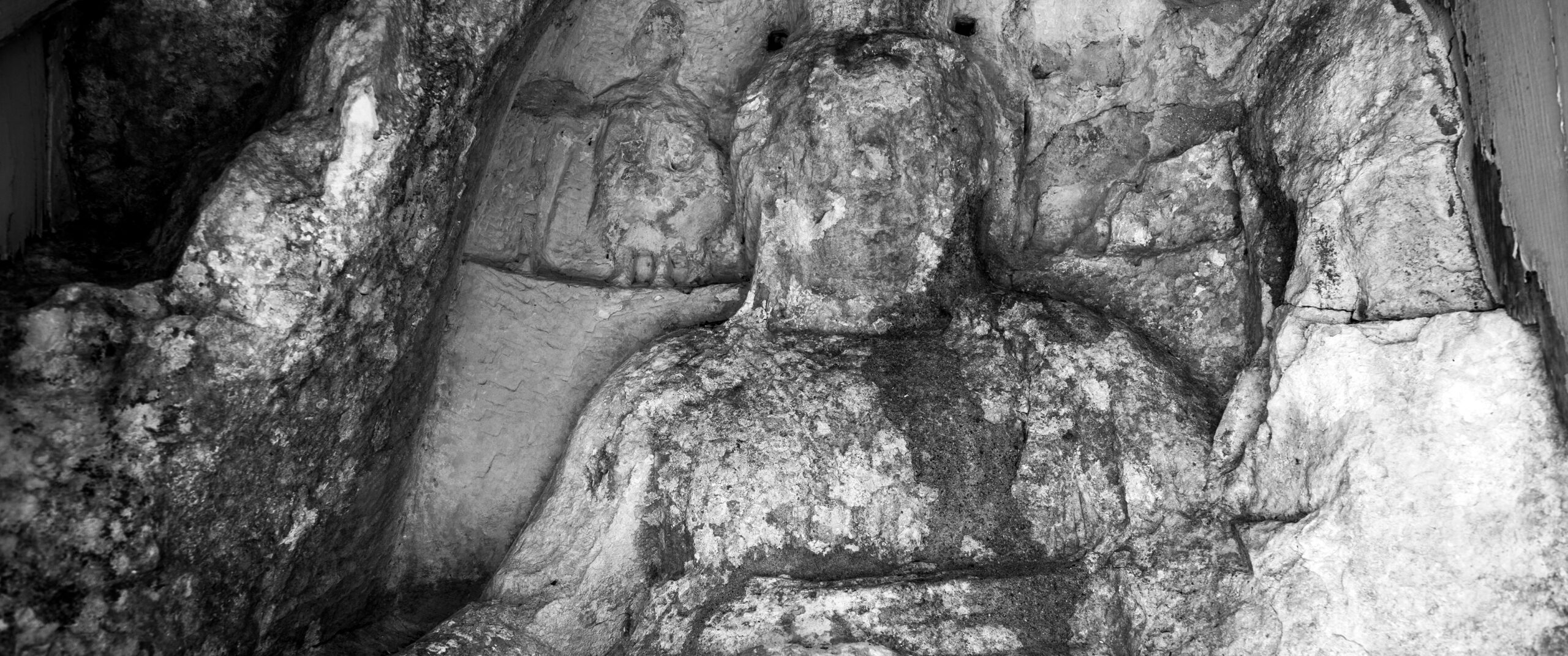The enigmatic sanctuary of the
Santoni whispers of ancient cults
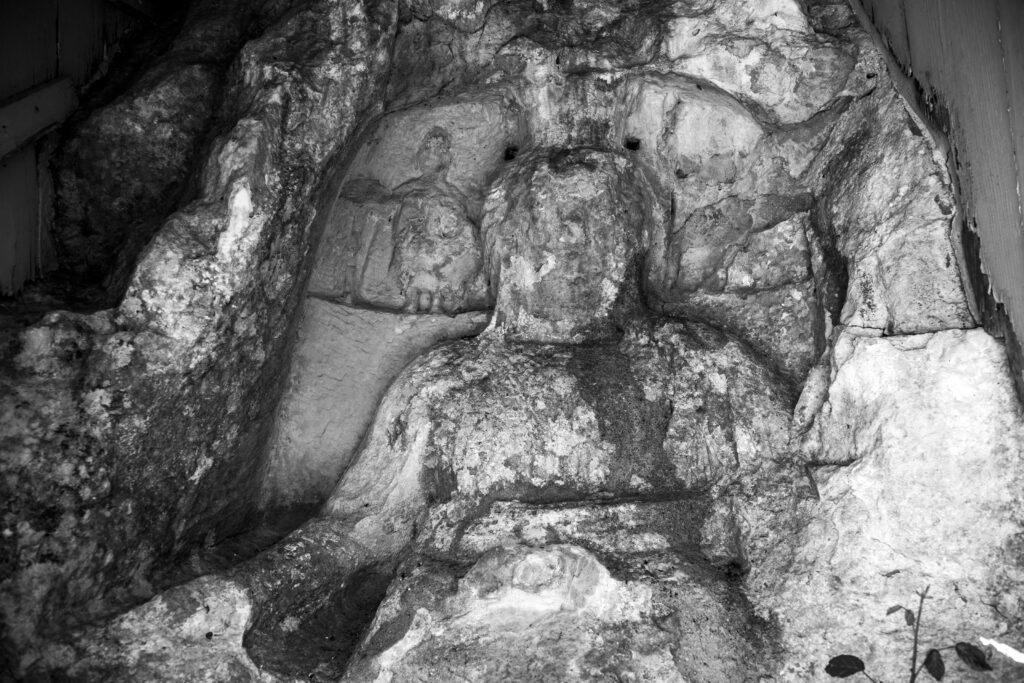
Nestled within the rocky landscape surrounding Palazzolo Acreide lies the intriguing and unique archaeological site known as the “Santoni” (the “Big Saints”). This open-air sanctuary, carved directly into a vertical rock face, presents a series of twelve striking, life-sized figures sculpted in high relief, dating back to the Hellenistic period, likely between the 3rd and 2nd centuries BC.
The identity of the deities or figures depicted remains a subject of scholarly debate, adding to the site’s mystique. Often interpreted as representations of Cybele, the Anatolian mother goddess associated with fertility and nature, and her consort Attis, the “Santoni” offer a rare and direct connection to ancient religious beliefs and practices in Sicily. The powerful and somewhat austere expressions of the figures, their static poses, and the rugged natural setting create a profoundly evocative atmosphere.
Each of the twelve “Santoni” is carved with distinct attributes and details, although centuries of weathering have softened some of the features. Traces of inscriptions, possibly dedications or explanations of the figures, can still be discerned, hinting at the rituals and beliefs that once animated this sacred space.
The choice of a natural rock face for this sanctuary underscores the ancient connection between the divine and the landscape. The site likely held significant religious importance for the local population, perhaps serving as a place for public worship, processions, and offerings to these powerful deities.
Visiting the “Santoni” is a unique archaeological experience. Unlike the more structured ruins of Akrai, this site offers a more direct and visceral encounter with ancient religious expression. The imposing figures carved into the living rock evoke a sense of timelessness and invite contemplation about the beliefs and spiritual world of those who created and venerated them centuries ago. It’s a place where the whispers of ancient cults still seem to resonate within the Sicilian landscape.
